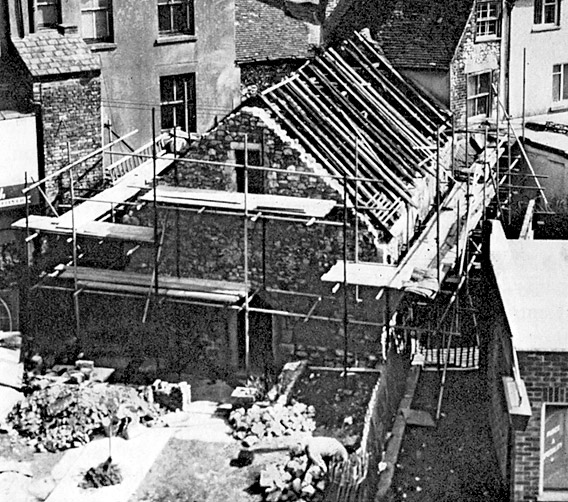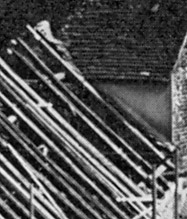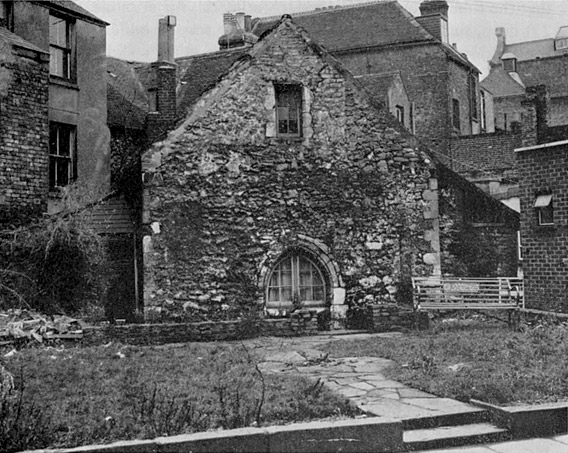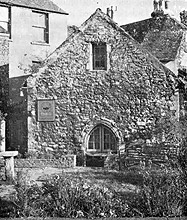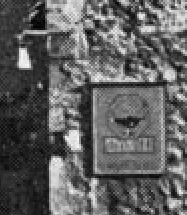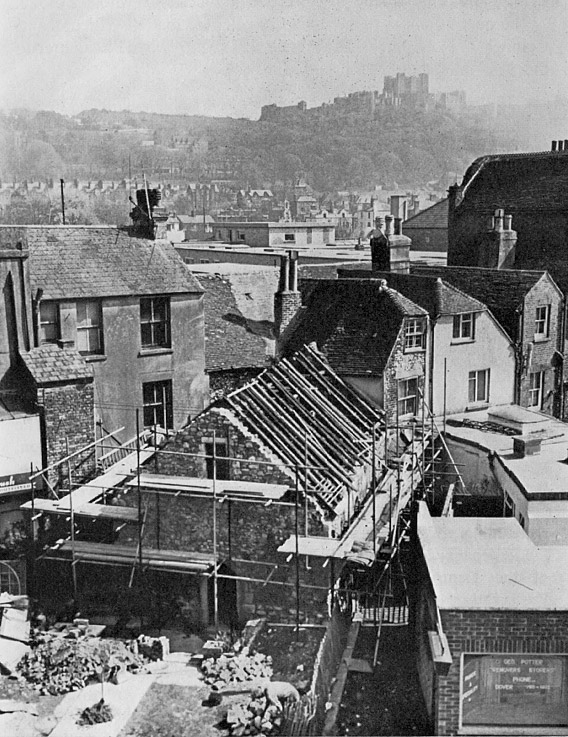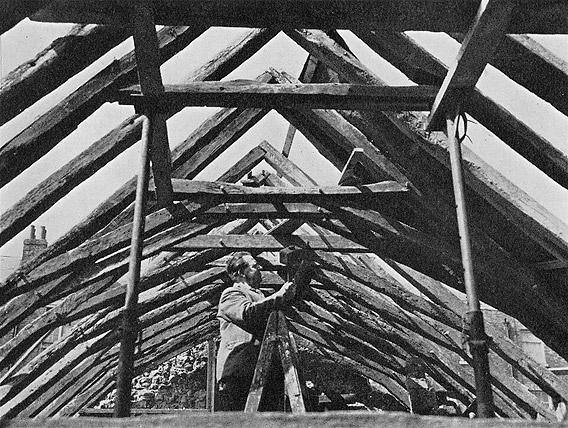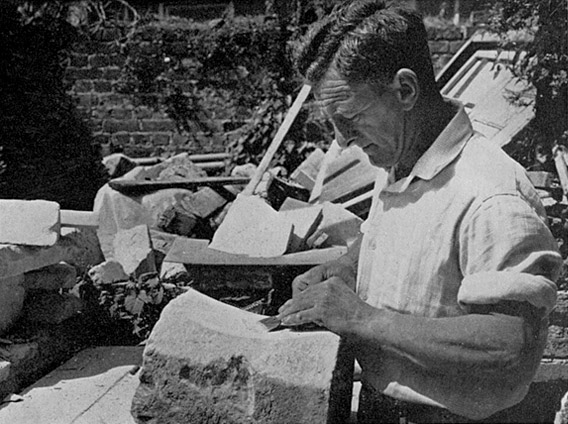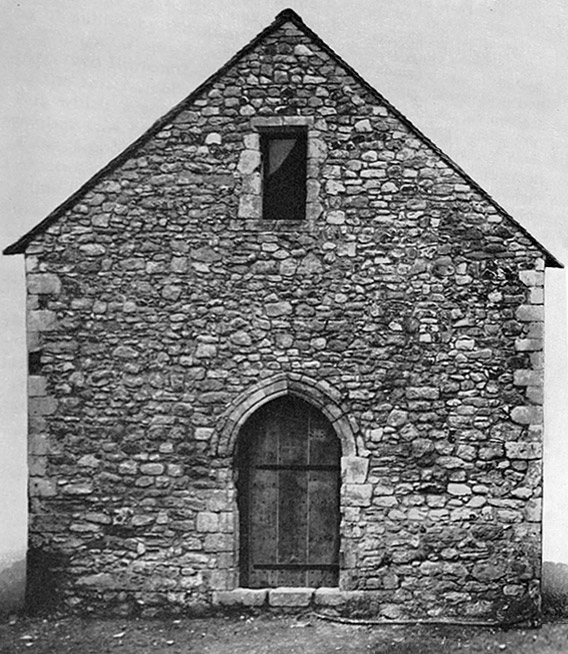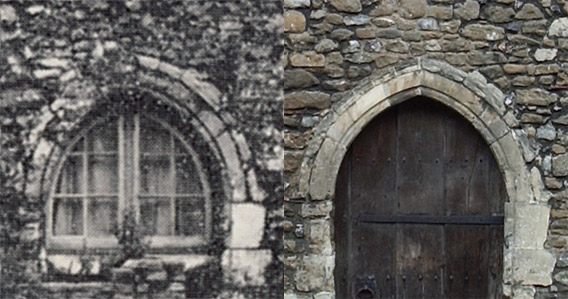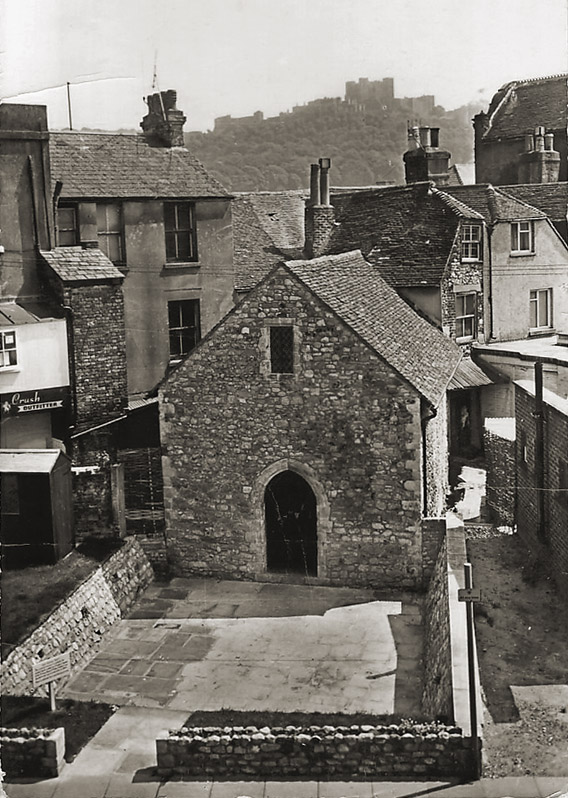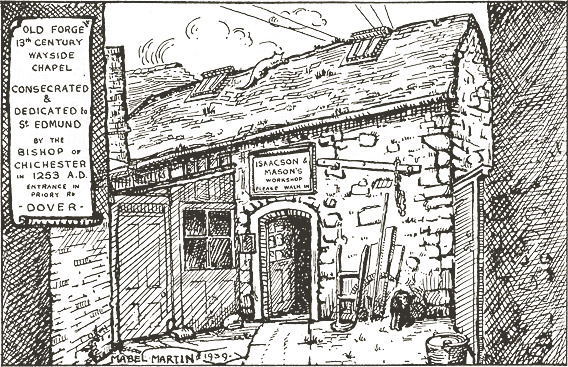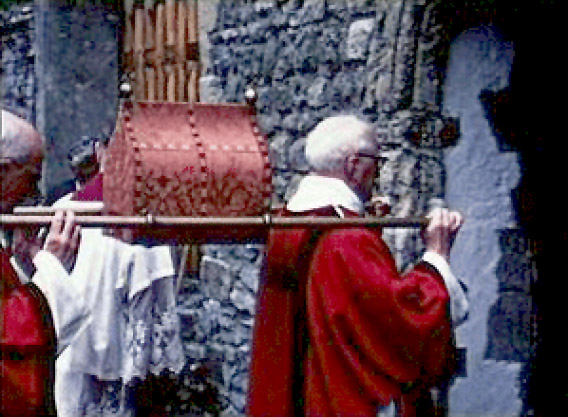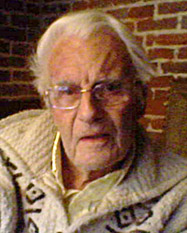
|
The History of the Restoration
The first suggestion that the Chapel should be restored seems to have been made in 1944. Mr Philip V. Marchant, who was the Borough Engineer at the time, incorporated its restoration in his plans for the re-building of Dover after the Second World War.
The Dover post-war development advisory committee during 1944 laid much stress upon the desirability of preserving the 12th [sic] century Wayside Chapel of St Edmund, situated between Priory Road and Biggin Street, which was 'discovered' following the destruction of the surrounding property by shellfire. Provision is made in the scheme, therefore, for the Chapel to be preserved in a strip of lawns and gardens fronting Biggin Street. The suggestion is put forward also that the existing War Memorial shall be transferred from its present position in front of Maison Dieu House to the lawns surrounding the Chapel and that, together, the Monument and the Chapel shall serve as Memorial to the men and women who gave their lives in the two World Wars. (Dover Re-construction Proposals, 1944, printed 1947, p.11.) In that year steps were taken to try and get the Chapel, which is in private ownership, scheduled as an Ancient Monument, so as to save it from the threat of demolition, which still, to this day, hangs over it. Dover Corporation were informed by the Ministry that it would only be scheduled if they purchased it and maintained it in perpetuity. This they were unwilling to do, and when enquiries were again made recently the ministry stands by its ruling of ten years ago, and Dover Corporation likewise stands by their decision at that time.
His attempts to save the Chapel seem to have been inspired by a Service that had been held at St Mary's Church to celebrate the seven hundredth anniversary of the consecration of the Chapel. The Mayor, the Bishop of Dover, and the Reverend P. B. (Tubby) Clayton, Founder Padre of Toc H, were present, and the Service was conducted by the Reverend Canon A. Stanley Cooper. The Address was given by Reverend Canon A. R. Browne-Wilkinson, M.A., Canon Residentiary of Chichester Cathedral. After the Service, there was a Procession. A short stop was made for prayer at the Chapel and the Procession continued to the Maison Dieu for concluding prayers and a blessing by the Bishop of Dover. Lieutenant-Colonel Drake-Brockman, who was Honorary Secretary of the Kent Archaeological Society's Sub-Committee for the Preservation of Ancient Buildings, did not give up his efforts until he knew that the Rev T Tanner was safely embarked upon restoring the Chapel. |
|
The Rev T E Tanner’s efforts to save the Chapel started very soon after his appointment to Dover in November 1958, although at that time he had no idea of undertaking the work himself. That determined phrase introduced a note of urgency into the vague plans which were being formed for its future use. back to top of page >> In a letter, also of 4th February 1964, in which the Rural Dean informed the Rev Tanner of the Chapter's decision, the Rural Dean continued: 'In the first instance we envisage the chapel restored as a Chapel of Unity, with the possibility of making it in due course an ecumenical centre with a hostel attached; but this, of course, must await further developments, although we must be ready for any possible purchase of adjacent properties'. Later that year (7th August 1964) the Rural Dean wrote to the Rev Tanner: 'The Archbishop (of Canterbury) is most anxious that the Chapel of Saint Edmund should be preserved ... Have you any great feelings if the Anglican Church were to raise all the money required to buy the freehold?' He had no objection, but on 12th March 1965, the Rural Dean informed the Dover Fraternal of Ministers that it looked as though it would be necessary to make an inter-denominational appeal after all, if the Chapel were to be saved. And on 4th June 1965, the Rural Dean reported to the same Fraternal that: 'Neither the Anglican Churches nor the Free Churches were going to raise the money to purchase the building, and he personally withdrew from any money-raising efforts devoted towards this end. It was agreed to leave the project alone.'Although the idea of restoring the Chapel as a Chapel of Unity had obviously to be abandoned, it should be recorded that almost half the cost of the purchase and restoration of the Chapel came from Church of England sources outside Dover. |
| The Original and the Restored Mr Anthony Swaine F.R.I.B.A., was in charge of the restoration of the Chapel, but even he does not know how responsible he was for its restoration. A lay person looking at the Chapel as it was in 1965 could have been permitted the opinion that not enough of the original building remained to merit restoration, but in those early days Mr Swaine accepted the responsibility for its being worthwhile. He is a leading authority on medieval architecture, and his enthusiasm was infectious. 'It is all here. It is remarkably preserved preserved Seventy-five per cent of this is original. You will never believe how completely it can be restored.' It was with phrases such as these that made the restoration inevitable.
It was he who explained the two schools of thought on restoring old buildings. There are the people who say that a restoration should show, rather like a patch on a little Dutch boy's trousers: that modern materials should be used so that the original and the restored are easily distinguishable. They call it being faithful. Mr Swaine belongs to the second school of thought, and he has gone to enormous trouble to procure only ancient material to restore this Chapel. Sometimes he has had to use pre-thirteenth-century material, but as he says, 'the builders could have used it, too'.
The Dover building company Messrs R. J. Barwick and Sons, Ltd, were the contractors for the restoration. The carpenter was Bert Cave and he had as his apprentice Ron Atkins. The mason was Ted Langley, assistant for a short period by Steve Carswell, and their mate was Arthur Goldsack.
Against the inside of the west wall a lavatory and kitchen sink had been built, and a staircase leading to the floor above. Upstairs, the walls and roof had been match-boarded over and another fireplace inserted in the angle of the north and east walls. Light was by two sky-lights inserted into the roof. If it was hard to identify as a chapel from the outside it was harder to identify as a chapel from the inside. Yet, incredibly, a large amount of the original material remained - in the walls, in the hardcore that has been used to raise the floor level, and in the ground nearby.
Before that, the Chapel had been used as a workshop by Mr G Isaacson, who is described in an Abstract of Titles, drawn up in 1933, and in the Dover Directory of 1925, as a blacksmith, but it always described by those who knew him as a whitesmith. At the time when Miss Mabel Martin did her drawing of the Old Forge (Plate 4), Mr Isaacson was very proud of the fact that he was working in one of the oldest chapels in the land while his son was preaching in one of the newest churches. Before him, a Frederick Turtle, described as a whitesmith, plumber and electrician, used the Chapel as his workshop. It was he who gave the Reverend T.S. Frampton permission to inspect it.And - 'a blacksmith has the east end' at the time of Mr Loftus Brock's visit in 1833.Before that, however, it is uncertain to what use the Chapel had been put.
back to top of page >> |
|

